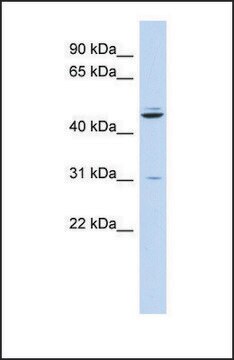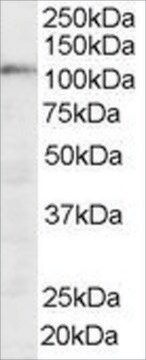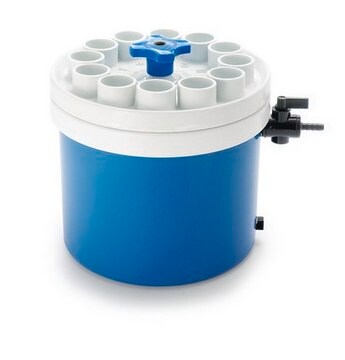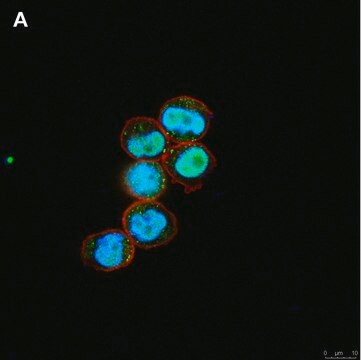ABC1431
Anti-HAF/SART1 Antibody
serum, from rabbit
Synonym(e):
U4/U6.U5 tri-snRNP-associated protein 1, Allergen Hom s 1, HAF, hSART-1, hSnu66, SART-1, Hypoxia-associated factor, SNU66 homolog, Squamous cell carcinoma antigen recognized by T-cells 1, U4/U6.U5 tri-snRNP-associated 110 kDa protein
About This Item
Empfohlene Produkte
Biologische Quelle
rabbit
Qualitätsniveau
Antikörperform
serum
Antikörper-Produkttyp
primary antibodies
Klon
polyclonal
Speziesreaktivität
human, mouse
Methode(n)
ChIP: suitable
immunoprecipitation (IP): suitable
western blot: suitable
NCBI-Hinterlegungsnummer
UniProt-Hinterlegungsnummer
Versandbedingung
ambient
Posttranslationale Modifikation Target
unmodified
Angaben zum Gen
human ... SART1(9092)
Allgemeine Beschreibung
Spezifität
Immunogen
Anwendung
Apoptose & Krebs
Immunoprecipitation Analysis: A representative lot immunoprecipitated HAF from human renal carcinoma ACHN cell lysate (Koh, M.Y. et al. (2015). Cancer Res. 75(2):316-329).
Western Blotting Analysis: Representative lots detected both endogenous and exogenously expressed HAF in various transfected human cancer cells, while a downregulated HAF was detected in cells co-transfected with HAF siRNA (Koh, M.Y. et al. (2015). Cancer Res. 75(2):316-329; Koh, M.Y. et al. (2011). Cancer Res. 71(11):4015-4027; Koh, M.Y., et al. (2008). Mol. Cell. Biol. 28(23):7081-7095).
Western Blotting Analysis: A representative lot detected HAP in HIF-1 immunoprecipitate from A549, HCT-116, and HT-29 xenografts (Koh, M.Y., et al. (2008). Mol. Cell. Biol. 28(23):7081-7095).
Qualität
Western Blotting Analysis: A 1:2,000 dilution of this antiserum detected HAF/SART1 in 10 µg of U2OS nuclear extract.
Zielbeschreibung
Physikalische Form
Lagerung und Haltbarkeit
Handling Recommendations: Upon receipt and prior to removing the cap, centrifuge the vial and gently mix the solution. Aliquot into microcentrifuge tubes and store at -20°C. Avoid repeated freeze/thaw cycles, which may damage IgG and affect product performance.
Sonstige Hinweise
Haftungsausschluss
Sie haben nicht das passende Produkt gefunden?
Probieren Sie unser Produkt-Auswahlhilfe. aus.
Lagerklassenschlüssel
12 - Non Combustible Liquids
WGK
WGK 1
Analysenzertifikate (COA)
Suchen Sie nach Analysenzertifikate (COA), indem Sie die Lot-/Chargennummer des Produkts eingeben. Lot- und Chargennummern sind auf dem Produktetikett hinter den Wörtern ‘Lot’ oder ‘Batch’ (Lot oder Charge) zu finden.
Besitzen Sie dieses Produkt bereits?
In der Dokumentenbibliothek finden Sie die Dokumentation zu den Produkten, die Sie kürzlich erworben haben.
Unser Team von Wissenschaftlern verfügt über Erfahrung in allen Forschungsbereichen einschließlich Life Science, Materialwissenschaften, chemischer Synthese, Chromatographie, Analytik und vielen mehr..
Setzen Sie sich mit dem technischen Dienst in Verbindung.







